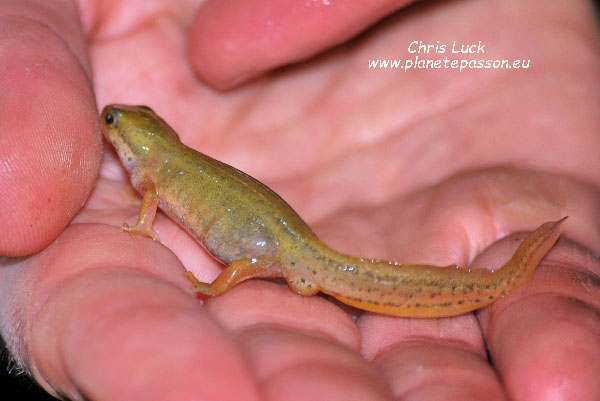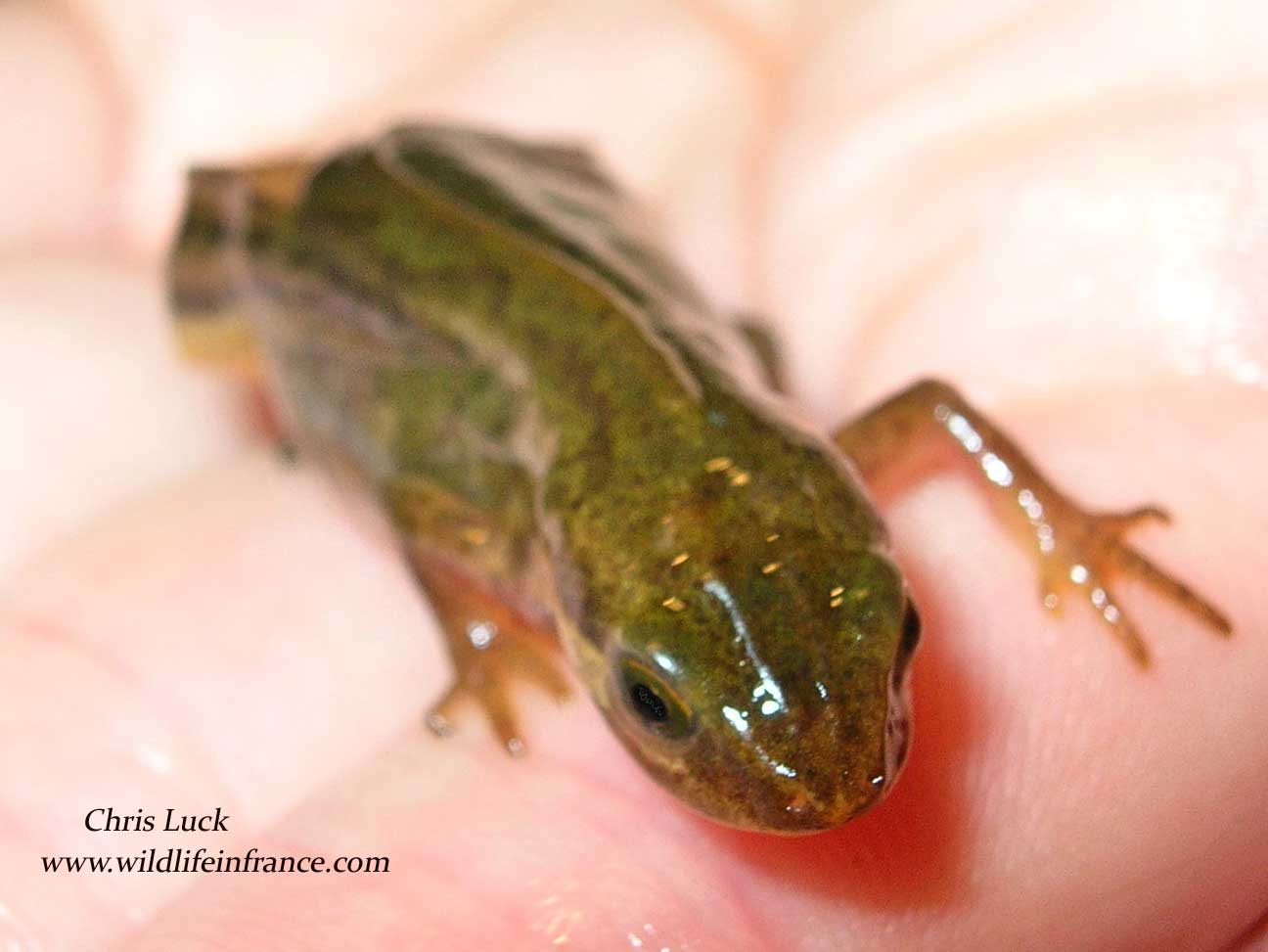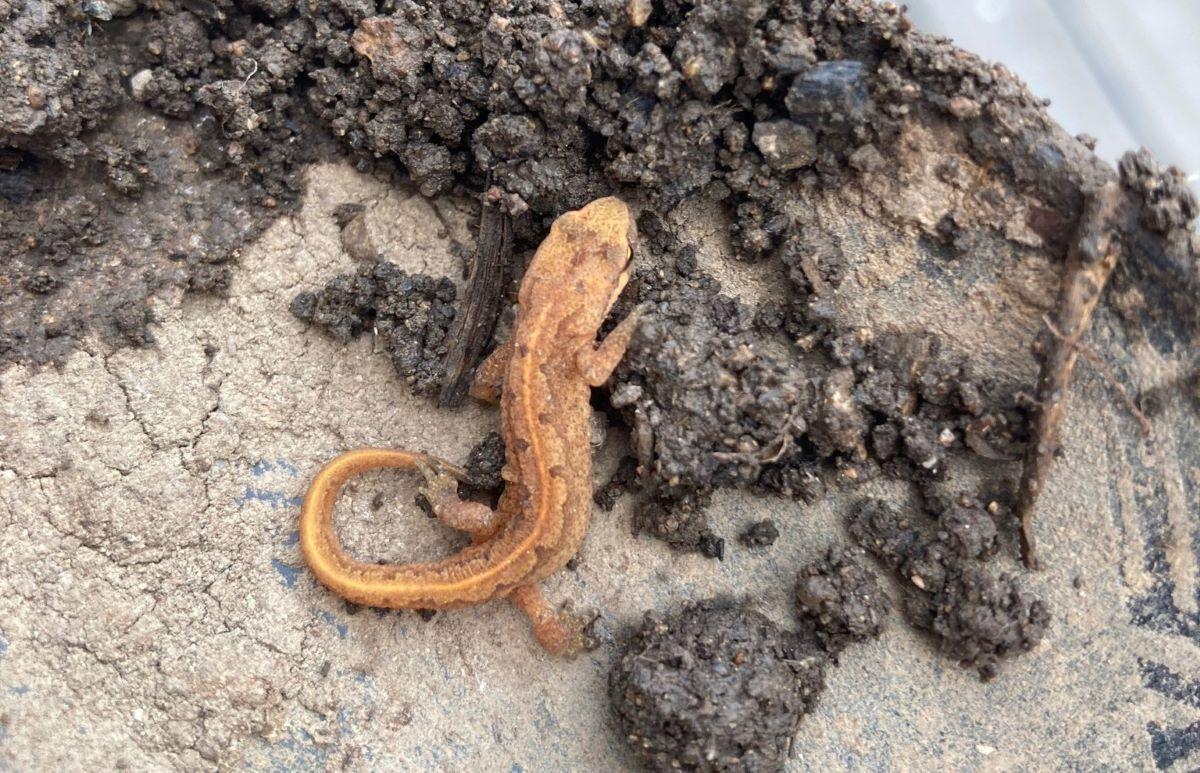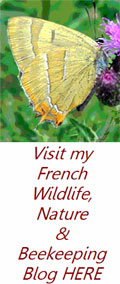Palmate Newt
Triturus, (Lissotriton), helveticus
Triton Palmé
The Palmate Newt is the smallest European newt
They can be found almost everywhere in France
with the exception of the extreme south east. They are considered to be relatively common, although they seem to require bushy cover near to the water where they breed. Almost all types of water are used, ponds, lakes, canals, ditches and slow flowing rivers and in the terrestrial phase they often remain within 150 metres of this, although they are capable of travelling several kilometres in search of a new breeding place. Prey is mainly small insects and their eggs. Hibernation, which is variable, can take place on land under natural debris or old tree stumps or in the south of France they may spend this period in the water.





